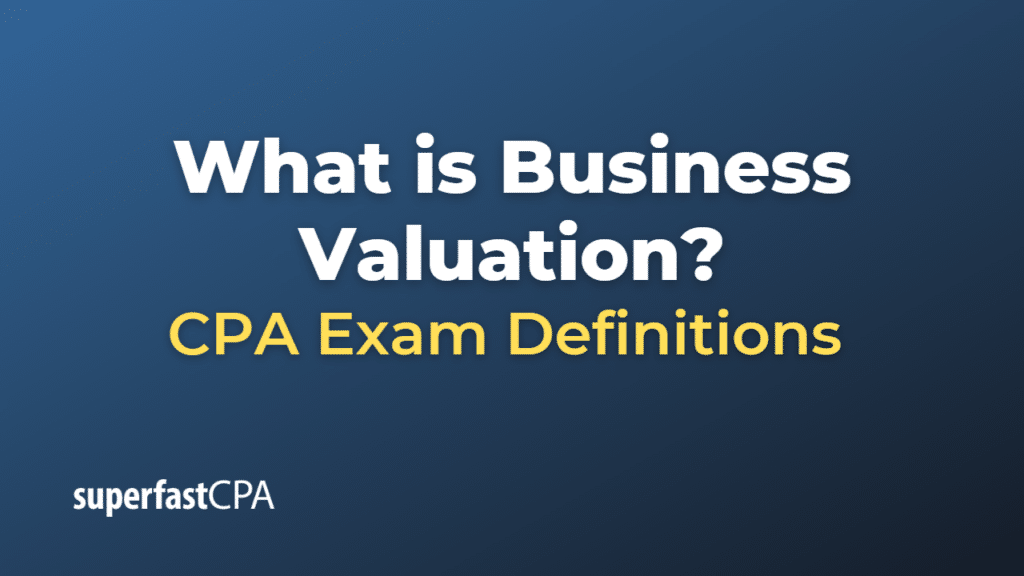Business Valuation
Business valuation is the process of determining the economic value of a business or a company. It is an essential tool used in various situations, such as mergers and acquisitions, investment analysis, business sales, financial reporting, and legal disputes. A business valuation helps to establish a fair market value for a company, allowing stakeholders to make informed decisions.
There are several methods used in business valuation, and they can be grouped into three main approaches:
- Asset-based approach: This method focuses on the net asset value of a company. It calculates the difference between the total value of the company’s assets and its liabilities. The asset-based approach can be further divided into two methods: the adjusted net asset method and the liquidation value method.
- Income-based approach: This approach values a business based on its ability to generate future income or cash flows. The most common income-based valuation methods are the discounted cash flow (DCF) method and the capitalized earnings method. These methods project future cash flows or earnings and discount them back to the present value using a discount rate, which reflects the risk associated with the business.
- Market-based approach: This method estimates the value of a business by comparing it to similar businesses that have been sold or publicly traded in the market. The market-based approach relies on multiples, such as the price-to-earnings (P/E) ratio or the price-to-sales (P/S) ratio, which are derived from the market data of comparable companies.
Each valuation method has its strengths and weaknesses, and the choice of method depends on the specific circumstances of the business being valued. Often, multiple methods are used to cross-validate the results and provide a more accurate and reliable valuation.
Example of Business Valuation
Let’s consider a simplified example of business valuation using the income-based approach, specifically the Discounted Cash Flow (DCF) method.
Imagine you want to estimate the value of a small restaurant. You gather the following information:
- The restaurant’s projected cash flows for the next 5 years are as follows:
- Year 1: $100,000
- Year 2: $110,000
- Year 3: $120,000
- Year 4: $130,000
- Year 5: $140,000
- The appropriate discount rate for the restaurant’s risk level is 12%.
Now, you can apply the DCF method to estimate the value of the restaurant:
Step 1: Calculate the present value (PV) of each year’s cash flow.
- Year 1: $100,000 / (1 + 0.12)^1 = $89,286
- Year 2: $110,000 / (1 + 0.12)^2 = $87,636
- Year 3: $120,000 / (1 + 0.12)^3 = $85,402
- Year 4: $130,000 / (1 + 0.12)^4 = $82,505
- Year 5: $140,000 / (1 + 0.12)^5 = $79,156
Step 2: Add up the present values of each year’s cash flow to find the total present value of the cash flows.
- Total PV = $89,286 + $87,636 + $85,402 + $82,505 + $79,156 = $423,985
In this simplified example, the estimated value of the restaurant based on the DCF method is $423,985. Keep in mind that this is just one approach, and it’s common to use multiple valuation methods to cross-validate the results and get a more accurate estimate. Additionally, a real-world valuation would involve more factors and complexity.













